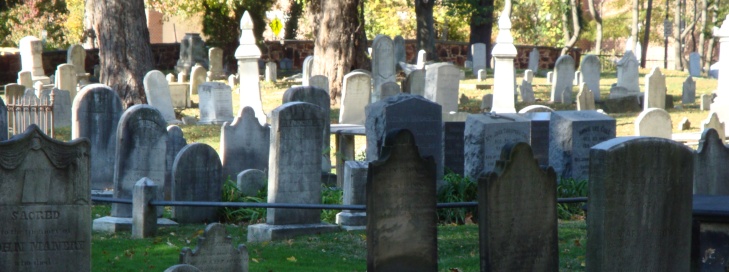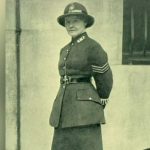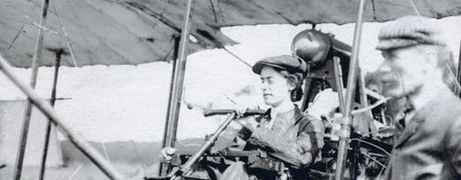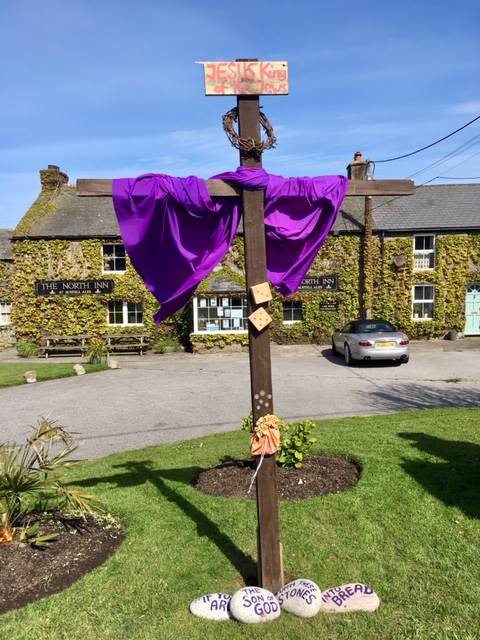Is a churchyard a good place to start talking about Easter?
 A churchyard might not spring to mind as the obvious place to contemplate the hopefulness of life, but Revd Karsten believes it’s absolutely the place to talk about Easter and the hope it represents.
A churchyard might not spring to mind as the obvious place to contemplate the hopefulness of life, but Revd Karsten believes it’s absolutely the place to talk about Easter and the hope it represents.

Lilian Wyles
In his role as police chaplain, the recent celebration and commemoration of Lilian Wyles, the first ever ranking officer in the CID, had special significance. Lilian is buried in Sennen’s churchyard and last month her unmarked grave was formally recognised with a gathering of the great and the good, including Metropolitan Police Commissioner Cressida Dick, and a new headstone was laid.
Very close to Lilian lies the resting place of another fabulously pioneering Lilian. Lilian Bland – the first woman in the world to design, build and fly an aircraft in 1910. She called it the Bland Mayfly because it may or may not fly. But it did, for a quarter of a mile.

Lilian Bland, the first woman in the world to design, build and fly her own aircraft
How many leave the graveside with hope – how many in despair?
“In our churchyards,” says Revd Karsten, “We tend to think about our dead, but as a vicar I also think of those who bury their dead. After the committal they have to physically turn to leave the churchyard. They have to face the rest of their lives without the presence of those they have buried. How many leave with hope, and how many in despair?”
Where is the hope for parents who have to bury their children? How can we talk to them about peace, purpose and a God who loves them? These aren’t easy or new questions, we’ve always wrestled with loss, pain and death.
Even Ozymandias ends up a handful of words drifting in the sand
Revd Karsten points to the last lines of Shelley’s Ozymandias, when even a king, believing himself magnificently indestructible, ends up as words on stone adrift in the sands,
“Nothing besides remains. Round the decay
Of that colossal Wreck, boundless and bare
The lone and level sands stretch far away.”
It all sounds a bit hopeless, but in this sobering darkness the hope of Easter shines. “There is a Lenten cross in Pendeen square and each week the children of the local school have put up a symbol reminding everyone of Jesus suffering: being tempted in the desert, being betrayed by his friends, brutally tortured, derided and killed in the most inhumane and humiliating of ways. This cross in our midst represents everything that makes us despair in life.
Yet Jesus, with only a handful of followers, changed everything
“When someone as seemingly powerful as Ozymandias ends up lying forgotten in the sands of time, how much easier should this have happened to Jesus with only a handful of followers?” Yet that didn’t happen. From a handful of followers came hundreds, from them thousands upon millions. It was Jesus’ Resurrection that changed everything.
Death had lost its sting and that, insists Revd Karsten, is not just the good news of Easter but makes walking through our graveyards an occasion of hope rather than despair. “Even though there might be many people resting in our churchyards that we don’t remember any longer, these people haven’t gone away, they have only gone ahead.”
“Behold, I am making all things new!”
To celebrate this truth the Lenten cross will be covered in flowers on Easter Day. “They are signs of beauty, hope and life. Come along! Put up your flower. Maybe to remember a loved one, a painful memory or a difficult situation in your life, trusting in God’s words, “Behold, I am making all things new.”

The Easter Cross at Pendeen
